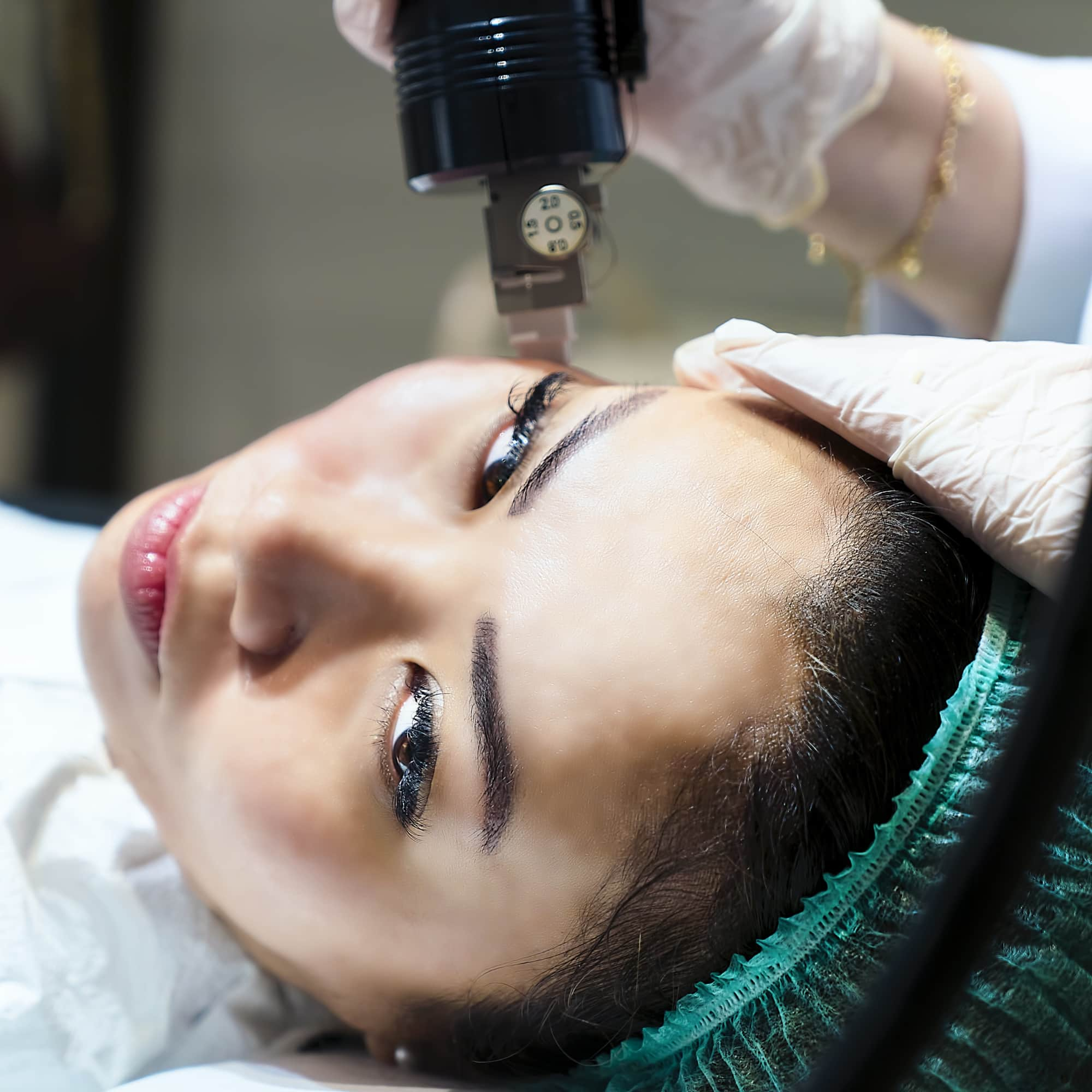
- POPSUGAR Australia
- Beauty
- 5 Beauty Treatments You Should Avoid in the Summer, According to Experts
5 Beauty Treatments You Should Avoid in the Summer, According to Experts

Summer is great for a lot of things – bright makeup trends, new skin-care products, fresh hairstyles – but there are a few things in the beauty space that are better left for the colder months. As the weather heats up and we’re in the sun more, there are a few beauty rules and best practices to follow, especially when it comes to beauty treatments you should and shouldn’t get in the summertime.
While things like spray tans, dyeing your hair, and getting Botox go together with the warmer months just fine, certain beauty treatments – like those involving lasers – do not. Instead, these trips to the dermatologist or salon are best saved for the fall. If you’re not sure what treatments are safe to get during the upcoming season, we tapped a few experts to go over the dos and don’ts of summer cosmetic procedures and skin-care treatments.
Chemical Peels
While chemical peels are great for revealing a smoother, brighter complexion, evening out your skin tone, and even keeping breakouts away, you may want to avoid getting them in the summer. “When you have a chemical peel, the acid used removes the topmost layer of skin off, rendering you more susceptible to sun damage,” Robyn Gmyrek, MD, board-certified dermatologist at Union Square Laser Dermatology, tells POPSUGAR. “Both sunlight and heat can cause more extensive damage and hyperpigmentation to this now-delicate skin while healing.”
Not to mention, if you have any sort of tan on your face, a chemical peel will remove it and leave you with a lighter skin tone on your face than your body.
There are at-home alternatives to getting a professional chemical peel that can leave your skin glowing this summer. “I always recommend my clients use Shani Darden Skin Care Retinol Reform in between treatments to keep their skin glowing,” celebrity aesthetician Shani Darden says. “I also love the Dr. Dennis Gross Alpha Beta Peel Pads, but since these are active, you definitely have to wear sunscreen during the day.”
Laser Hair Removal
Despite laser hair removal being a popular topic of conversation around summertime due to it being bathing-suit season, this treatment is actually best to pursue in the fall and winter. “Lasers used for laser hair removal target the melanin or pigment in the hair located deep in the hair follicle,” Dr. Gmyrek says. “If you are tanned, you will have melanin or pigmentation at the surface of the skin. When the laser light hits the area, it will be absorbed by both the hair melanin as well as the melanin on your skin, and there is a risk for burning the skin.”
This goes for self-tanner as well. If a burn does occur, it can cause the skin to heal lighter or permanently scar.
Intense Pulsed Light (IPL)
According to board-certified plastic surgeon Heather Furnas, MD, IPL should be delayed until the fall or winter. This is because the skin post-treatment can be prone to sun damage and hyperpigmentation. “Tanned skin can also increase the risk of inaccurate laser settings, which can lead to injury,” Dr. Furnas says.
Dr. Gmyrek explains that when using IPL to target brown spots, “if the skin around the brown spot is tanned, the laser cannot tell which spot it is removing and will generate heat in the entire area, possibly leading to damaged and even burnt skin.”
Tattoo Removal
While you may be thinking about removing an unwanted tattoo during this time, it’s not the best idea for the same reasons you should avoid laser hair removal. “The lasers used for tattoo removal can also be absorbed by the pigment in the skin, not just the tattoo,” Dr. Gmyrek says. Therefore, you cannot be tanned or you run the risk of possibly burning the skin. Sunlight can also affect the results of the tattoo removal process and lead to potential scarring.
Laser Resurfacing Treatments
Not dissimilar to chemical peels, laser resurfacing treatments help exfoliate the top layer of your skin on an extreme level to stimulate new collagen production. “The laser version of a chemical peel – such as Fraxel – uses laser light to penetrate deeply and create wounds in the skin,” Dr. Gmyrek says. While the skin is healing from this sort of treatment, it is incredibly sensitive to the sun. “If you get unintended sun exposure during this time, it will likely compromise your results and also put you at risk for healing with extra and possibly irregular pigmentation on the skin.”
If Treatment Is Unavoidable
If for some reason you simply can’t avoid getting one of these beauty treatments in the summer, there are ways you can lower your risk of irritation afterward. That starts with finding a clean, safe facility that can inform you of all of the best practices – especially in a world with COVID-19. “Search for a facility that looks out for your safety by following rigorous guidelines, such as those established by AesCert and the Skinbetter Science Institute,” Dr. Furnas says.
As far as post-treatment care goes, your healing process really depends on your personal sun habits, summer activities, and how careful you plan on being.
“I always recommend wearing sunscreen every single day, whether you’re outside or not, as well as a wide-brim hat and sunglasses if you’ll be in the sun,” Darden says. And don’t forget to reapply every two hours.
“I have patients who truly do not go out during the day very much in the summer in order to avoid sun exposure,” Dr. Gmyrek says. “If this is you, perhaps you will be able to receive your laser and beauty treatments in the summer the same as you do in the winter.”








